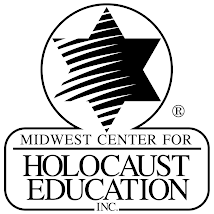With the implementation of Common
Core and 1:1 initiative of I-pads, presenting classroom lessons is continuously
changing. With emphasis being placed on
nonfiction reading, writing and researching, I utilized my trip to Poland and
Germany to challenge students.
Therefore, the youtube video is an introduction to real people, real
places and real events. Nonfiction
stories of Holocaust survivors, prisoners of concentration camps or
extermination camps, righteous rescuers, and liberators spread their messages
through autobiographies, biographies, chronicles, documentaries, movies,
poetry, plays, oral traditions, testimonies and interviews.
Therefore,
this movie reflects her personal experience visiting historical sights at
Auschwitz-Birkenau Concentration and Extermination Camp, Treblinka Death Camp,
and Buchenwald Concentration Camp. The
people highlighted in the video are listed in order of appearance. In
1941, Maximilian Kolbe, Polish Franciscan priest, volunteered to take the place
of family man Francizcek Gajowniczek, one of ten selected men to die. Local
Kansas City man Colonel Keith Schmedemann, was a liberator of Buchenwald in 1945. Elie Wiesel, Nobel Peace Prize Winner for his
memoir NIGHT, was among the thousands who were liberated by the United
States Army. Dr. Janusz Korczak
established an orphanage for 200 children that were relocated to the Warsaw
Ghetto. Instead of seeking freedom for
himself, Janusz Korczak went with the
orphans to Treblinka Death Camp.
Karol Wojtyla, also known as Pope John Paul II, grew up playing with his
Jewish friends Zygmunt, Leopold, Poldek and Jerzy Kluger who molded his boyhood
experiences in Wadowice, Poland.
Another group, righteous rescuers,
are non-Jews who risked their lives to save Jews during the Holocaust. Five brief stories are told. One is of a rescuer and a survivor. In 1940, Maria and her mother saved Janina, a
Jewish Holocaust survivor from Warsaw.
Inspired by her father to help those less fortunate, Irena Sendler was
head of the children’s section of Zegota---the Polish Underground Council for
aid to Jews. A chair like many others on
the brick road symbolizes Oskar Schindler’s ingenuity and contribution to help
save Jews. Oskar Schindler, German industrialist, employed cheap Jewish labor
at his Krakow factory. These righteous rescuers are just a few of many whose
stories continue to be told.
Through reading, researching and
talking with scholars, survivors, righteous rescuers, and liberator, I continue
to strive for understanding. Therefore,
teaching the Holocaust challenges me to integrate the choices of victims and
rescuers of the past into the future, our children.
Respectfully submitted by Kimberly Klein on October 28, 2013. The lesson is outlined below:
Learning Target: To apply
reading and writing skills to comprehend, analyze and evaluate
OBJECTIVE:
Students will watch Youtube video “Holocaust: Memories of the Past Spoken to the Heart” of historical sites, people, and events that I created for student
introduction. The genre is nonfiction.
ACTIVITIES:
- As a class, students will read Surviving Hitler by Andrea Warren.
- Students will take notes on the real people, real places, real events,conflict and attributes/flaws
- Students will organize information (events) in a timeline
- Students will research in the USHMM website -The United States Holocaust Memorial Museum is a reliable website and is recognized internationally
- Using the website, students will research a liberator, righteous rescuer, survivor, or victim
- Students will record information about person—also referring to documents, testimonies, biographies, photographs, letters, interviews
- Students will analyze information. This process includes paraphrasing information, summarizing, connecting, reflecting and drawing conclusions.
- Students will write a “How to inform” paper on the “Said” topic
- Students will include bibliography that demonstrates how to cite sources
ASSESSMENT:
Students will present findings and how they accomplished the task to the
class
EVALUATION:
Progress will be monitored from baseline reading, researching, analyzing
and citing from introduction.
Therefore,
learning about the people, places and events of the Holocaust will allow
students to develop critical thinking skills, to make connections from the past
to the present, and to learn how to access information.




